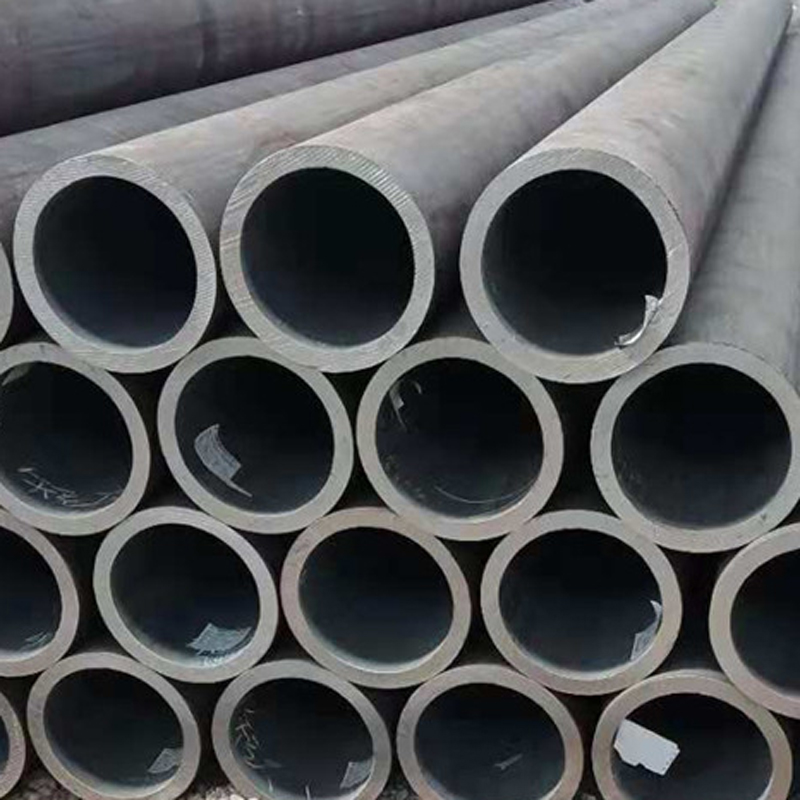Understanding 201, 202, 301, 302, 304 Stainless Steel: Which Grade Is the Better Choice?
Stainless steel is one of the most widely used metallic materials in instrumentation, piping systems, chemical equipment, and precision manufacturing. For engineers and buyers, understanding the differences between stainless steel grades-especially 201, 202, 301, 302, and 304-is crucial for selecting safe, reliable, and cost-effective products.
As a global manufacturer of stainless steel pipes, tubes, and custom components, Ganyeah Group often helps customers distinguish these grades to match process media, temperature, pressure, corrosion environment, and budget. Below is a clear, practical guide to the most common stainless steel families and their typical industrial uses.

Martensitic stainless steel pipes in Ganyeah workshop
What Makes Stainless Steel “Stainless”?
Stainless steel is defined by its ability to resist corrosion in air, water, steam, and chemical media.
Its corrosion resistance depends primarily on chromium, nickel, molybdenum, carbon, and other alloying elements that help form a stable, self-repairing chromium-oxide passive film.
In practical applications:
- Steels resistant to weak corrosive media (air, water, steam) are called stainless steel.
- Steels resistant to strong chemical media (acids, alkalis, salts) are known as acid-resistant steel.
Because of compositional differences, stainless steel may not always be acid-resistant—while acid-resistant steel is almost always stainless.
Stainless Steel Categories by Metallurgical Structure
Most stainless steels used in industry fall into five primary categories, each offering different strength, corrosion resistance, heat resistance, and processing characteristics.
1. Austenitic Stainless Steel (200 / 300 Series)
FCC crystal structure, non-magnetic in annealed condition.
Strengthened primarily through cold working.
Typical grades: 201, 202, 301, 302, 304, 304L, 316, 316L, 321, 347, 904L
- Excellent corrosion resistance
- Great formability and weldability
- Most widely used in piping, chemical equipment, instruments
2. Ferritic Stainless Steel (400 Series)
BCC crystal structure, magnetic.
Cannot be hardened by heat treatment.
Typical grades: 409, 430, 446
Applications: kitchen equipment, auto exhaust, decorative parts, heat-resistant components.
3. Martensitic Stainless Steel (400 Series)
Can be quenched and hardened.
Excellent strength and wear resistance.
Typical grades: 410, 420, 440C
Applications: valves, shafts, bearings, knives, precision mechanical parts.
4. Duplex Stainless Steel
Mixed austenitic + ferritic structure.
Typical grade: 2205
Advantages:
- Higher strength than 304/316
- Excellent resistance to chloride pitting and stress corrosion cracking
Common in offshore, desalination, and chemical environments.
5. Precipitation Hardening Stainless Steel (PH Stainless Steel)
Typical grade: 17-4PH (630)
Offers very high strength after aging treatment.
Used in aerospace, offshore platforms, precision instruments.

Comparing Popular Stainless Steel Grades: 201, 202, 301, 302, 304
Below is a practical comparison used frequently in industrial design and stainless steel pipe selection.
201 Stainless Steel
- Lower nickel content, higher manganese
- Moderate corrosion resistance
- Good mechanical strength
- More cost-effective than 304
Applications: household products, indoor structures, general-purpose components.
202 Stainless Steel
- Similar to 201 but with improved toughness
- Better corrosion resistance than 201, but lower than 304
- Suitable for mild environments
Applications: restaurant equipment, building decoration, light-duty machinery.
301 Stainless Steel
- Higher work-hardening rate
- Strength increases significantly during cold forming
- Some magnetism may be present after deformation
Applications: springs, fasteners, high-strength parts, instrument components.
302 Stainless Steel
- Similar to 304 but slightly higher carbon
- High strength and better temperature resistance
- Good for components requiring higher hardness
Applications: mechanical springs, automotive components, industrial instruments.
304 Stainless Steel (The Industry Standard)
- 18% Cr / 8–10% Ni
- Excellent corrosion resistance and formability
- Widely used in process piping, food equipment, instruments
Applications:
Process piping, heat exchangers, sensor bodies, valves, chemical vessels, deep-drawing parts.
Advanced Grades Commonly Used in Instrumentation
304L
Ultra-low carbon version of 304
Best for welded components requiring excellent intergranular corrosion resistance.
316 / 316L
Contains Mo, significantly improving pitting resistance in chloride environments.
The most common material for offshore, petrochemical, and pharmaceutical equipment.
321 / 347
Stabilized grades (Ti or Nb) that resist sensitization at high temperature.
Used in high-temperature instrumentation.
904L
A super-austenitic material with 24–26% Ni and excellent resistance to strong acids.
Used in high-end instruments and luxury applications.
Surface Finishes of Stainless Steel (NO.1, 2B, BA, NO.3, NO.4)
Stainless steel surface finish affects corrosion resistance, hygiene, and appearance.
Common finishes include:
- NO.1: Hot-rolled, rough surface; structural use
- 2B: Smooth, matte; widely used for stainless steel pipes and industrial sheets
- BA: Bright annealed; highly reflective
- NO.3 / NO.4: Polished surfaces for architectural and decorative applications
Why Do Thickness Tolerances Differ?
During rolling, thermal expansion causes deviations—usually thicker in the center and thinner at the edges.
Market demand leads to two levels of tolerance:
- Large tolerance
- Small tolerance (more precise, higher cost)
Accurate thickness tolerance is crucial for pressure-rated stainless steel pipes and instrumentation components.
What Kind of Stainless Steel Is More Rust-Resistant?
- Alloy content
Higher chromium and nickel improve corrosion resistance.
For example, 304 (18Cr-8Ni) performs significantly better than 201/202. - Quality of smelting
Large mills with advanced equipment ensure fewer impurities and better corrosion resistance—this is one reason customers trust Ganyeah Group for stable, reliable stainless steel pipe quality. - Service environment
Even 304 may rust in humid, salty, or polluted conditions.
Choosing the correct grade is essential.
How to Treat Rust on Stainless Steel
Chemical cleaning
Pickling paste or spray removes rust and restores passivation.
Mechanical cleaning
Sandblasting, brushing, or polishing, followed by repassivation.
Stainless Steel Selection in Instrumentation
Typical selection trend considering performance vs. cost:
304 → 304L → 316 → 316L → 317 → 321 → 347 → 904L
- 304/304L dominate general instrumentation
- 316/316L is preferred for corrosive media
- 347 for high-temperature stability
- 904L appears in a few premium components (e.g., mass flowmeters, luxury devices)
When the pipe material and instrument material differ, especially under high temperature, it is necessary to compare their temperature-pressure ratings to avoid material mismatch and failure.
